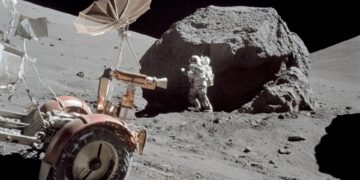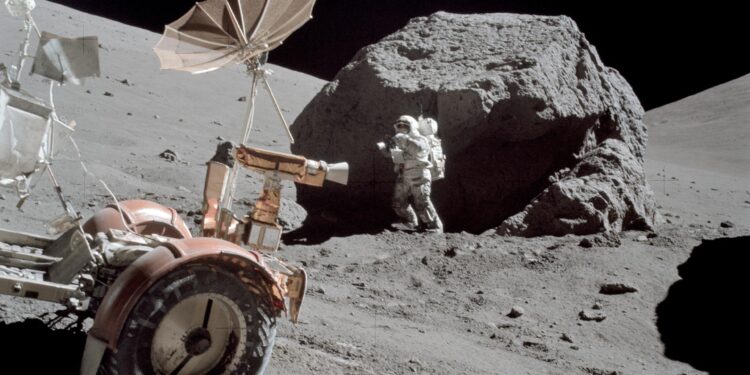As humanity prepares to return to the Moon, a new frontier is emerging time itself. Imagine a clock that ticks faster just because you’re standing on the Moon. This isn’t science fiction; it’s the reality that NASA and international space agencies are grappling with as they race to establish the Moon’s very own time zone, dubbed Coordinated Lunar Time (LCT). What might sound like a minor tweak could be the game-changer that makes or breaks the future of lunar missions. From pinpoint landings to mining precious lunar resources, everything hinges on this new timekeeping revolution.
But why is this so critical? Let’s dive in.
The Point of No Return: Why Lunar Time is Crucial
Space travel is fundamentally about precision, and timekeeping is at the heart of that precision. Earthly clocks, regulated by atomic principles, are highly accurate, but they depend on Earth’s gravity to function correctly. On the Moon, with its significantly weaker gravitational pull, even the most sophisticated atomic clocks would begin to deviate. Research from the National Institute of Standards and Technology (NIST) highlights that a clock on the Moon would gain approximately 56 microseconds per day compared to one on Earth.
This time difference may seem negligible, but in space, where every second counts, such discrepancies could spell disaster. Think about GPS systems: they depend on a network of synchronized clocks to provide accurate positioning data. A similar system will be needed on the Moon to guide landers, rovers, and even future lunar bases. Without synchronized lunar clocks, navigation could become a chaotic endeavor, leading to miscommunications, failed landings, and even potential accidents.
The Science Behind Lunar Timekeeping
The primary challenge in creating a lunar time zone is accounting for the Moon’s different gravitational environment. According to Einstein’s theory of relativity, time moves faster in weaker gravitational fields. This phenomenon, known as gravitational time dilation, means that time passes differently on the Moon than on Earth. In fact, the exact speed of a clock on the Moon depends on its altitude and location, further complicating the task of developing a uniform lunar time standard.
To counter this, NASA and NIST are working on establishing what is being called Lunar Coordinate Time (LCT), a system similar to Earth’s Coordinated Universal Time (UTC). This would provide a master clock for all lunar operations, ensuring that communication, navigation, and data transfers are all synchronized to the same reference point. Such a system would be indispensable for the Artemis program, which aims to return astronauts to the Moon by 2026.
Lunar Coordinate Time will serve as the foundation for a “lunar GPS” network, with atomic clocks placed at specific locations on the lunar surface and in orbit around the Moon. These clocks will function much like satellites in Earth’s GPS constellation, providing precise timing signals for navigation across the lunar landscape.
Why Lunar Time Matters Beyond the Moon
Establishing a time zone on the Moon isn’t just about improving lunar operations. It’s about laying the groundwork for human exploration of the solar system. If humanity is to settle on the Moon—and eventually Mars and beyond—accurate timekeeping will be essential for everything from daily routines to complex scientific experiments.
Lunar Coordinate Time could serve as a prototype for other celestial bodies. As NASA and other space agencies look toward Mars, the challenges of timekeeping will only grow more complex. Mars, for instance, has its own gravitational quirks and rotational period, necessitating a similarly unique approach to time management. By solving the timekeeping challenges on the Moon, scientists and engineers will gain valuable experience that can be applied to future deep space missions.
This effort also marks a significant step toward international cooperation in space. Timekeeping is a universal challenge, and developing a standard that all spacefaring nations can agree upon will be critical for the success of future missions. The European Space Agency (ESA), for instance, has been instrumental in pushing for a common lunar time reference, and other countries like China and India are expected to participate as they ramp up their own lunar ambitions.
How Lunar Coordinate Time Will Be Implemented
The development of Lunar Coordinate Time will not be an easy task. Unlike Earth, which has multiple time zones based on longitudinal divisions, the Moon will likely have just one standardized time zone, which will not include daylight savings time.
This is because the Moon rotates far more slowly than Earth, with one lunar day (the time it takes for the Moon to complete one rotation) lasting about 29.5 Earth days. This long lunar day makes the concept of “daylight savings” irrelevant on the Moon.
The system will need to be incredibly robust, capable of functioning independently if communication with Earth is lost. It will also need to be scalable, meaning it can be adapted for use on other celestial bodies like Mars.
The key components of this system will include atomic clocks placed in strategic locations both on the lunar surface and in orbit. These clocks will be linked via radio signals to ensure that all lunar operations, whether they are scientific experiments or astronaut excursions, are perfectly synchronized.
The Bigger Picture: What We Can Learn from Lunar Time
The establishment of a lunar time zone is a prime example of how space exploration pushes the boundaries of human ingenuity. Solving the challenges of timekeeping on the Moon could lead to breakthroughs in physics, engineering, and even our understanding of the universe.
For example, the data gathered from lunar clocks could offer new insights into the effects of gravity on time, potentially confirming or refining aspects of Einstein’s theory of relativity. Additionally, the creation of a lunar GPS system could revolutionize how we navigate not just in space, but also on Earth, as the technology developed for the Moon could be adapted to improve Earth-bound GPS systems.
Furthermore, the establishment of a lunar time zone symbolizes a new era of space exploration—one in which humanity must adapt to new environments and challenges as we expand our presence beyond Earth. As NASA prepares to send humans back to the Moon and eventually to Mars, timekeeping will be just one of many hurdles we will need to overcome.
In the end, the creation of Lunar Coordinate Time is about much more than just keeping clocks in sync. It’s about ensuring that humanity’s return to the Moon—and our eventual exploration of the solar system—is safe, efficient, and scientifically productive.
Reference:



















